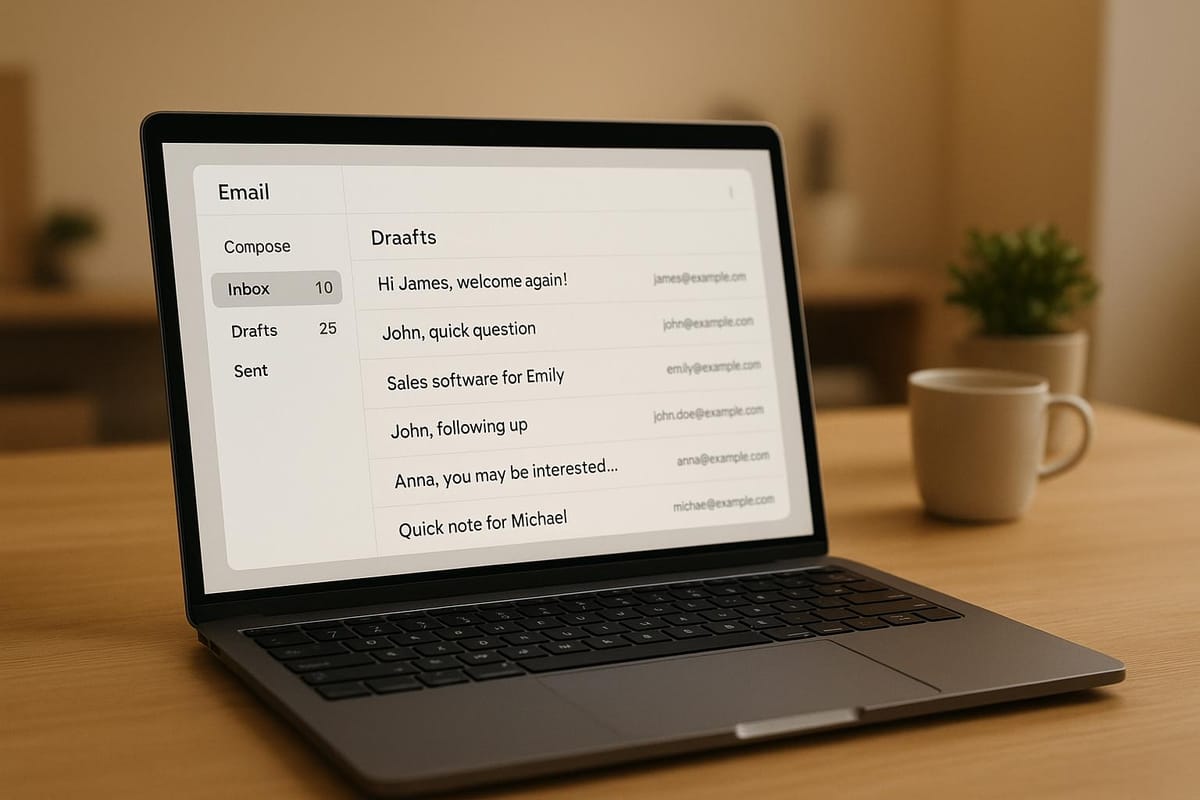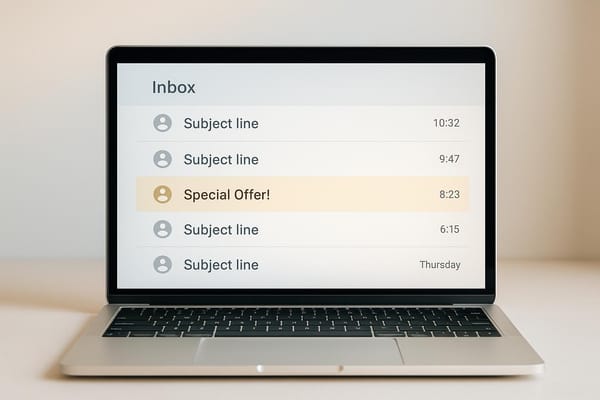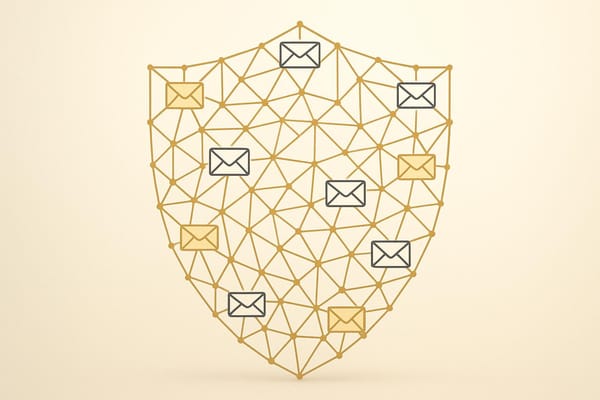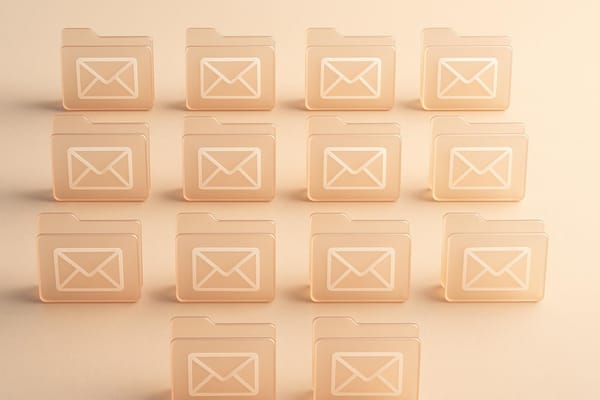Complete Guide to Scaling Cold Email Campaigns
Learn effective strategies for scaling cold email campaigns, focusing on deliverability, personalization, and compliance to boost outreach and ROI.

Scaling cold email campaigns can skyrocket your outreach and ROI, but it requires the right strategy, tools, and execution. Here’s a quick summary of how to scale effectively:
- Focus on Deliverability: Set up SPF, DKIM, and DMARC to ensure your emails land in inboxes, not spam.
- Warm Up Domains: Gradually increase email volume over 4–8 weeks to build trust with email providers.
- Personalize at Scale: Use segmentation and tools to tailor emails, boosting reply rates by up to 142%.
- Respect Sending Limits: Spread emails across multiple accounts to stay within daily limits and protect your sender reputation.
- Clean Your Email Lists: Regularly remove inactive or invalid contacts to keep bounce rates below 0.5%.
- Track Performance: Measure open rates, response rates, and engagement to refine your campaigns.
| Key Metric | Best Practice | Benchmark |
|---|---|---|
| Deliverability | Use SPF/DKIM/DMARC | Inbox rate > 95% |
| Personalization | Tailor emails by segment | Reply rate: 18–30% |
| Sending Volume | Warm domains gradually | Start: 50/day/account |
| List Hygiene | Remove invalid emails | Bounce rate < 0.5% |
Scaling isn't just about sending more emails - it's about sending better emails. With the right infrastructure and strategy, you can create meaningful connections at scale while protecting your sender reputation.
How To Send 10,000 Cold Emails A Day (FULL COURSE)
Building Your Email Infrastructure
Getting your emails into inboxes instead of spam folders depends heavily on having a solid email infrastructure. This setup becomes even more critical when running large-scale campaigns. Key elements like SPF and DKIM can improve inbox delivery rates by as much as 25%. A complete infrastructure includes four main components: the Mail Transfer Agent (MTA) for sending emails, the Mail Delivery Agent (MDA) for routing them, the Mail User Agent (MUA) for managing messages, and DNS records to authenticate your identity. Let’s break down how to build and fine-tune these components for effective outreach.
Domain Strategy for Scale
Using your primary domain for cold outreach can put your overall reputation at risk. Instead, set up separate domains to protect your main domain while giving you room to experiment. When creating alternate domains, keep them close to your brand name. For example, if your main domain is "techsolutions.com", you might use "tech-solutions.io" as an alternate.
Domain extensions also play a role in deliverability. While .com domains are reliable, they can be flagged more often due to their frequent use in spam campaigns. .net domains are generally well-regarded by email providers, and though .io domains are pricier, they’re a good choice for established businesses. Always set up redirects from your alternate domains to your main website so prospects can easily find your business.
Tools like Icemail simplify domain setup. They use AI to suggest relevant domain variations, handle technical configurations, and optimize for premium inbox delivery - all while saving time and earning strong reviews.
Email Authentication Setup
Email authentication is your way of proving to email providers that you’re a legitimate sender. Without proper setup, your emails could end up in spam folders. The three essential protocols are SPF, DKIM, and DMARC, and poor authentication is why 46% of emails fail to reach inboxes.
- SPF (Sender Policy Framework): This confirms the IP address authorized to send emails on behalf of your domain. Set it up right after buying a new domain.
- DKIM (DomainKeys Identified Mail): This ensures that your email content isn’t altered during delivery.
- DMARC (Domain-based Message Authentication, Reporting, and Conformance): Building on SPF and DKIM, DMARC adds an extra layer of alignment checks and tells email providers how to handle emails that fail authentication.
Using tools like Icemail can automate these configurations, cutting setup time from hours to just minutes.
Domain Warming Best Practices
Sending a large volume of emails from a new domain without warming it up can harm your reputation. Domain warming is the gradual increase of email volume to build trust with email providers. This process typically takes 4-8 weeks, depending on your email volume goals.
Start with small batches. In the first two weeks, focus on your most engaged subscribers - those who’ve opened or clicked emails in the past 30 days. Over the next two weeks, include subscribers who’ve engaged within the past 60 days. Avoid sending to unengaged recipients (those inactive for 90+ days) during the first six weeks.
Begin with 50-100 emails per day for the first two days. Gradually double your daily volume until you hit a significant number, then increase by 20-50% daily to keep bounce rates and complaints manageable.
| Day Range | Daily Volume | Target Recipients |
|---|---|---|
| Days 1-2 | 50-100 emails | Most engaged (recent openers and clickers) |
| Days 3-4 | 200 emails | Highly engaged subscribers |
| Days 5-7 | 400 emails | Moderately engaged (opened in last 60 days) |
| Days 8-10 | 600-800 emails | Subscribers who opened within 90 days |
This table outlines a gradual volume increase for effective domain warming.
Keep a close eye on metrics like engagement and bounce rates. If issues arise, reduce your volume by 25-30% until things stabilize. Consistency is key - maintaining steady sending patterns and engagement helps build trust with email providers. To further improve open rates (by up to 15-20%), consider rotating domains and IPs once your initial domains are warmed. Dedicated IP warming requires extra care but offers long-term benefits for high-volume senders.
Campaign Strategies for Scale
Building a strong email infrastructure is just the beginning. To truly scale your campaigns, you need strategies that balance high-volume outreach with personalized engagement. This involves respecting sending limits, leveraging personalization, and continuously refining your approach.
Setting Sending Limits
Staying within daily sending limits is essential to protect your sender reputation and avoid spam filters. Your sender reputation - a score tied to your inbox and domain - plays a big role in whether your emails land in inboxes or spam folders. Crossing these limits can harm your reputation and hurt your delivery rates.
Different email services set specific daily limits. For instance:
| Email Service Provider | Daily Sending Limit |
|---|---|
| Gmail (Free) | 500 |
| Gmail (Google Workspace) | 2,000 |
| Outlook (Free) | 300 |
| Microsoft 365/Office 365 | 10,000 |
| Yahoo! | 500 |
| Amazon SES | 10,000 |
| SendGrid (Pro) | Up to 1.5 million per month |
To scale effectively, consider the Multi-Sender technique. This method spreads email volume across multiple accounts, ensuring each account stays within safe limits. Tools like Icemail simplify this process by automating sending limit management across multiple accounts. With features like AI-powered enforcement and bulk mailbox management, it’s easy to scale without technical hassles.
Another key practice is maintaining clean email lists. Regularly remove inactive or invalid addresses to keep bounce rates low. Also, track engagement metrics - like open rates, replies, and spam reports - to measure campaign performance. Remember, follow-ups matter: 55% of email responses come from follow-up emails. Plan your sending limits accordingly to accommodate multiple touchpoints.
With sending limits under control, the next step is crafting emails that feel personal, even at scale.
Personalization at Scale
Personalization goes beyond adding a prospect's name to an email. Emails with personalized subject lines are 26% more likely to be opened, and tailored messages can increase reply rates by up to 32%. The challenge is delivering this level of personalization to a large audience without losing quality.
Start with segmentation. Group prospects based on factors like industry, company size, location, job title, or specific pain points. This allows you to craft messages that resonate with each segment. Tools like LinkedIn Sales Navigator can provide deeper insights for more precise targeting.
For example, instead of sending a generic email like, "Hi there, I help companies like yours generate more leads", try something more specific: "Hey Sarah, I loved your recent blog post on B2B funnels - especially your take on using LinkedIn over email. I work with SaaS brands like yours to scale outreach without burning out their lists". Emails like this, tailored to the recipient, can drive six times higher transaction rates.
To make personalization manageable, create flexible templates that can be quickly adjusted. Use account-based selling (ABS) and persona-based messaging to address different roles. For instance, a CFO might care about ROI and cost savings, while a marketing director might focus on lead generation. Tracking how prospects interact with your content will help you refine your approach over time.
A/B Testing and Optimization
A/B testing is a powerful way to fine-tune your email campaigns and achieve better results. For instance, one client saw a 30% boost in open rates after implementing a structured A/B testing plan. As Zack Olivas, Founder & CEO, puts it:
"A/B testing is important because over time it can take a cold email campaign that receives a 5% response rate and convert it into a cold email campaign that returns a 20% response rate. That's a 4x increase in responses for the same exact effort."
Start by testing subject lines. Experiment with curiosity-driven versus benefit-focused lines, or personalized versus generic ones. For example, a SaaS company compared two subject lines: "Boost Your Productivity with [Tool Name]" and "Struggling with Time Management? Try This." The latter saw a 25% higher open rate and a 20% increase in replies.
Next, test call-to-action (CTA) placement and language. See if CTAs work better at the end of your email or embedded within the content. Compare softer asks (like "Let me know your thoughts") with more direct requests (like "Schedule a call today"). Timing also matters - experiment with different days, times, and follow-up intervals to find the best engagement windows. Research shows that sending at least three follow-up emails can boost reply rates by over 28%.
To run effective A/B tests, split your audience into equal, randomized groups, test one variable at a time, and monitor metrics like open and click-through rates for 7–14 days. Automation tools can streamline this process and ensure accurate results. Regular testing keeps your campaigns effective as audience behaviors and market trends shift.
List Quality and Data Analysis
Scaling cold email campaigns hinges on solid infrastructure and smart automation, but none of that matters if your list quality is poor or you're ignoring performance data. Keeping your lists clean and analyzing campaign metrics are essential steps in ensuring success.
List Cleaning and Validation
Regularly cleaning your email list is a must. Remove inactive, bounced, and unengaged addresses on an ongoing basis. Why? Because mailing lists lose about 22% of their contacts each year, and up to 15% of email addresses are invalid on average. Neglecting this can hurt your deliverability and reputation.
Bounce rates should stay below 0.5%. Beyond managing bounces, you’ll also want to remove role accounts like those ending in @support or @info, duplicate entries, and subscribers who never engage.
Jesse Sumrak from Twilio highlights the importance of this practice:
"Cleaning your email lists on a regular basis will improve your engagement metrics, sender reputation, and deliverability rates."
Implementing double opt-in processes can help prevent spam traps, bots, and typos from sneaking into your list. Consider a "sunset policy" to automatically remove inactive subscribers - though surprisingly, nearly 60% of senders still skip this basic step, according to Mailgun's State of Email Deliverability report. Before cutting ties with inactive contacts, try re-engagement campaigns featuring special offers or valuable content to win them back.
For a hands-off approach, tools like Icemail offer automated list validation and bulk management. Its AI-powered system detects problematic addresses early, saving you time and preserving your sender reputation. Plus, Icemail’s fast inbox setup and glowing customer reviews make it a go-to solution for many.
Schedule list cleaning at least every six months. Segment your audience based on engagement, automate win-back campaigns, and make opting out simple to minimize spam complaints. The goal isn’t just to shrink your list - it’s to build a more engaged audience that drives conversions and protects your reputation.
Once your list is in shape, the next step is diving into campaign data to fine-tune your outreach.
Campaign Performance Analysis
A clean list does more than boost deliverability - it sharpens your ability to analyze performance data and make informed decisions. Without this analysis, you’re essentially guessing at what works.
Robin Dimond, CEO of Fifth & Cor, sums it up well:
"Open rates, click-through rates and conversion rates aren't just numbers - they're the key to understanding what's working and what's not. Ignoring these metrics means you're wasting time and money on emails that aren't driving results."
Recent data highlights some challenges marketers face. Open rates dropped from 36% in 2023 to 27.7% in 2024, and the average cold email response rate hovers around 5.1%. However, strategic follow-ups can increase reply rates by almost 50%.
Key metrics to track include:
| Metric | Description | Typical Benchmark |
|---|---|---|
| Open Rate | Percentage of recipients who open emails | 27.7% (2024 average) |
| Response Rate | Percentage of recipients who reply | 5.1% (cold email average) |
| Click-Through Rate | Percentage of recipients who click links | Varies by industry |
| Bounce Rate | Percentage of undelivered emails | Under 0.5% recommended |
| Conversion Rate | Percentage of recipients who take action | 1–5% typical range |
Tracking recipient behavior, such as repeated opens or successful subject lines, can help you refine your segmentation and messaging. Timing is also crucial. With 81% of emails now opened on mobile devices, decision-makers are bombarded with messages - 37% of them receive over 10 emails per week, many of which are irrelevant.
Icemail simplifies performance tracking with its analytics dashboard, which consolidates data from multiple accounts. Real-time reporting allows for quick adjustments, while automated insights identify trends you might otherwise miss. It also integrates seamlessly with your existing tools, streamlining your workflow.
A/B testing is another powerful tool for improving results. Personalizing subject lines, for instance, can boost response rates by 30.5%. However, A/B tests often reveal significant differences only in 1 out of 8 cases, so consistent testing across variables like subject lines, send times, and calls-to-action is critical.
Keep a close eye on unsubscribe rates and spam complaints, as these directly affect your sender reputation. Spikes in these metrics can indicate issues with your messaging, frequency, or targeting. Use this feedback to inform every aspect of your strategy, from segmentation to follow-up sequences. Data isn’t just numbers - it’s your most reliable tool for scaling effectively.
Tools and Team Management
When you're ready to scale your cold email campaigns, having the right tools and a skilled team in place is non-negotiable. Even the best strategies will fall short without a reliable platform and knowledgeable personnel to execute them effectively. The goal is to find tools that not only support growth but also help maintain quality, even as your campaigns expand.
Choosing Scalable Email Tools
The tools you use can make or break your scaling efforts. While many email platforms offer basic features like scheduling and tracking, scaling requires more advanced capabilities. Look for features such as unlimited email accounts, inbox rotation, and strong deliverability management. Other must-haves include email warm-up, A/B testing, in-depth analytics, and the ability to manage multiple domains and inboxes from one dashboard. These features are essential for boosting campaign performance and maximizing ROI.
One standout option is Icemail, a premium tool designed for teams serious about scaling. It simplifies onboarding with an AI-powered domain finder and automated setup for DKIM, DMARC, and SPF protocols, ensuring top-notch deliverability from the start. Icemail also offers bulk mailbox purchasing and one-click import/export functionality, saving time when setting up multiple accounts.
For agencies managing multiple clients, Icemail’s separate workspace accounts and automated inbox rotation can cut bounce rates by up to 90%.
Training and Managing Teams
Even the best tools won't deliver results without a well-prepared team. Scaling cold email campaigns requires staff who understand key areas like personalization, compliance, and performance optimization. The challenge is maintaining quality while increasing volume, which calls for structured training and clear processes.
Start by focusing on personalization training. Teach your team how to research recipients and weave specific details - like recent achievements, shared interests, or company updates - into their emails. Personalization can boost transaction rates by as much as six times.
Audience segmentation is another essential skill. Train your team to group prospects by factors like industry, job role, or company size. This allows for more targeted messaging and increases the effectiveness of your campaigns.
Icemail’s user-friendly interface makes onboarding and training your team a breeze, helping them hit the ground running with minimal setup time.
Real-world success stories highlight the value of proper training. For example, Dragonfruit Media achieved a 76.2% open rate and a 66.7% reply rate by training their team to create personalized video pitches. This campaign resulted in a 100% meeting booking rate and a 64.2% conversion rate. Similarly, Lifesize saw a 57% improvement in open rates and an 82% increase in response rates, with year-over-year revenue jumping by 31% after adopting data-driven segmentation and personalized email sequences.
Compliance training is equally important. Teams need to understand regulations like CAN-SPAM and GDPR to avoid legal issues. Regular sessions on topics like opt-out procedures, data handling, and proper sending practices are essential.
To ensure smooth operations, assign clear roles and responsibilities within your team. Tasks like list management, email content creation, performance analysis, and technical setup should be divided to maintain efficiency and accountability.
Finally, incorporate A/B testing and continuous analysis into your workflow. Experiment with subject lines, email copy, and calls-to-action to see what resonates best with your audience. A well-thought-out follow-up strategy that adapts based on recipient behavior can also yield better results.
Monitoring deliverability is another critical component. Tools like MXToolbox can help track domain health and avoid blacklisting. Stick to a daily sending volume of 50–60 emails per account and stagger your sending schedules to improve deliverability.
Compliance and Deliverability at Scale
As your cold email campaigns grow, staying within legal boundaries and safeguarding your sender reputation becomes increasingly important. Sending thousands of emails daily leaves little room for error. By understanding key regulations and adopting strong reputation management practices, you can scale your campaigns while minimizing risks.
Email Regulation Compliance
In the U.S., three main regulations come into play: CAN-SPAM, GDPR (for EU residents), and CCPA/CPRA (for California residents).
The CAN-SPAM Act regulates commercial emails in the U.S. on an opt-out basis. It applies to both B2C and B2B communications. Every email must include a clear unsubscribe option, a valid physical address, and truthful subject lines. Recipients have the right to opt out, and businesses must process these requests within 10 business days.
GDPR, on the other hand, requires explicit consent (opt-in) before contacting EU residents. This regulation emphasizes user privacy and prohibits pre-checked consent boxes. Opt-out requests must be handled immediately, and GDPR applies globally if you're targeting EU residents, regardless of where your business is based.
Meanwhile, CCPA/CPRA focuses on California residents, granting rights such as opting out of data sales and requesting data deletion. Businesses have 15 days to process deletion requests and must adhere to an opt-out model similar to CAN-SPAM.
Failing to comply can lead to hefty penalties. CAN-SPAM violations can cost up to $46,517 per email. GDPR fines can reach €20 million or 4% of global annual revenue. CCPA/CPRA violations carry fines of $2,500 per unintentional violation and $7,500 per intentional violation.
| Requirement | CAN-SPAM (US) | GDPR (EU/EEA) | CCPA/CPRA (California) |
|---|---|---|---|
| Consent Type Required | Implied consent; opt-out based | Explicit consent (opt-in) | Opt-out based, with deletion rights |
| Pre-checked Consent | Allowed | Not allowed | Allowed |
| Unsubscribe Mechanism | Mandatory | Mandatory and easy to use | Mandatory, with deletion rights |
| Opt-out Processing Time | 10 business days | Immediate | 15 days for deletion requests |
| Physical Address Required | Yes | No | No |
| B2B vs B2C Distinction | Same rules apply | Relaxed for B2B in some cases | Same rules apply |
| Penalties for Violations | Up to $46,517 per email | Up to €20M or 4% of global revenue | $2,500–$7,500 per violation |
To stay compliant at scale, implement a consent management system that tracks how and when you obtained each contact's information. Keep detailed records, as regulators may request them during audits. Use clear, straightforward language in your emails and avoid misleading subject lines. Even in opt-out jurisdictions, many experts recommend using opt-in methods to build trust and strengthen your audience relationships.
Once compliance is under control, the next step is to safeguard your sender reputation.
Protecting Sender Reputation
Your sender reputation is like a credit score for email marketing - it determines whether your emails land in inboxes or get flagged as spam. Icemail simplifies this process by automating authentication protocols from the start.
Email providers evaluate your reputation based on factors like authentication, sending patterns, engagement rates, and complaint levels. A high sender reputation (a score above 90) is essential for inbox placement. With nearly half of all emails flagged as spam, maintaining a solid reputation is critical.
Start by ensuring proper authentication protocols to prevent spoofing and verify your identity. Icemail handles this for you during onboarding, minimizing risks tied to configuration errors.
Stick to consistent sending schedules to avoid sudden spikes in email volume, which can trigger spam filters. Gradually increase your sending volume as your infrastructure matures.
Using clean, high-quality email lists is another key factor. The average bounce rate in the industry is 0.41%, so aim to keep yours below this threshold. Regularly clean your lists to remove invalid or inactive addresses, and consider using double opt-in processes for new subscribers. Active, engaged lists typically see open rates of 18% or higher.
Monitor engagement metrics like open rates, clicks, and unsubscribes to catch issues early. Keep your spam complaint rate below 0.3% as per Google Sender Guidelines. Using a dedicated subdomain for cold email campaigns can also protect your primary domain’s reputation by isolating these activities.
Make it easy for recipients to unsubscribe. A complicated process can lead to frustration and more spam complaints, which harm your reputation. Segment your email lists by engagement levels and adjust your sending frequency to maintain high engagement rates.
Conclusion: Scale Cold Email Campaigns Successfully
Scaling cold email campaigns requires a solid foundation, thoughtful personalization, and strict adherence to compliance. These elements work together to create a system that delivers results while protecting your sender reputation.
To start, having a strong email infrastructure is non-negotiable. Proper authentication protocols like SPF, DKIM, and DMARC, combined with strategies like domain rotation and IP management, can significantly improve your campaign's performance. These measures can increase inbox delivery rates by 25% and boost open rates by 15–20%. As Iga Wójtowicz from Mailforge.ai aptly says:
"If your emails aren't getting delivered, the problem isn't your copy, it's your infrastructure."
This technical groundwork is the cornerstone of any successful outreach effort.
Next, personalization takes your campaigns to the next level. Emails with personalized subject lines can nearly double open rates, jumping from 16.67% to 35.69%. Automated personalization further increases open rates by 75%. Considering that 47% of recipients decide whether to open an email based solely on the subject line, personalization isn’t just a nice-to-have - it’s essential.
Compliance and list hygiene are equally critical. Keeping your email lists clean and adhering to regulations can lower bounce rates by 90% and help establish trust with your audience. Once these foundational elements are in place, the right tools can help you scale efficiently.
Platforms like Icemail make scaling easier by offering features like 10-minute onboarding, automated DNS management, and deliverability rates exceeding 95%. By handling tasks like authentication, domain warming, and infrastructure management, tools like this allow you to focus on crafting impactful messaging.
With 80% of buyers preferring email as a contact method and email marketing delivering a better ROI than social media, cold email campaigns remain a powerful tool when executed correctly. By prioritizing strong infrastructure, meaningful personalization, and compliance, you can create campaigns that not only scale but also build trust and engagement with your audience. Start implementing these strategies today to maximize the potential of your cold email efforts.
FAQs
How can I scale my cold email campaigns while staying compliant with regulations like CAN-SPAM and GDPR?
To expand your cold email campaigns while staying on the right side of laws like CAN-SPAM and GDPR, stick to these key practices:
- Be upfront and honest: Make sure every email includes accurate sender details, a clear and truthful subject line, and a physical mailing address. Misleading information isn’t just bad for your reputation - it can lead to steep fines under CAN-SPAM.
- Make opting out simple: Every email should have a visible unsubscribe link, allowing recipients to opt out easily. Not only is this a legal requirement, but it also helps build trust with your audience.
- Protect privacy: If you're emailing within GDPR-regulated regions, ensure you have a lawful reason to contact recipients - like their prior consent. Be clear about how you collect and use their data.
By sticking to these steps, you can scale your campaigns responsibly, safeguard your brand’s image, and steer clear of legal trouble. For a seamless and compliant cold email experience, consider using Icemail, a service known for its speed and exceptional deliverability.
How can I warm up a new domain to ensure better email deliverability for large-scale campaigns?
Warming up a new domain is a crucial step to ensure strong email deliverability, especially when planning large-scale campaigns. Begin by sending a small number of emails each day - think 5 to 10 - and gradually increase the volume by about 10–15% daily. Start with your most engaged recipients to encourage positive interactions, such as opens and replies, which help build a solid sender reputation. Keep a close eye on performance metrics and adjust your strategy to avoid issues like high bounce rates.
It's also important to authenticate your domain using SPF, DKIM, and DMARC. These protocols help establish trust with email providers and reduce the chances of your messages being flagged as spam. To strengthen your domain's reputation, send emails to a diverse recipient list that includes users on various platforms like Gmail and Yahoo. Consistency is key - stick to a regular sending schedule to avoid sudden spikes that might trigger spam filters. Remember, warming up a domain is a gradual process that typically takes 3 to 6 weeks, so stay patient and consistent for the best results.
How does scaling personalization improve cold email campaigns, and what tools can help streamline the process?
Scaling personalization can transform your cold email campaigns, making them far more effective. By crafting tailored messages that truly connect with recipients, you can significantly improve engagement and conversion rates. Personalized emails often achieve much higher open and click-through rates compared to generic ones because they address specific needs and challenges.
To make personalization work at scale, you'll need the right tools. CRM systems, email automation platforms, and dynamic field technologies are crucial here. For instance, platforms like icemail have earned a reputation for their quick inbox setup and excellent user feedback. These tools help you segment your audience, automate the inclusion of personalized details, and handle large campaigns - all while keeping your communication authentic. By tapping into data from sources like LinkedIn profiles or company websites, you can create messages that are not only relevant but also engaging, giving your outreach efforts the best chance of success.





